
Lincoln County is located in the eastern part of the U.S. state of Missouri. As of the 2020 census, the population was 59,574. Its county seat is Troy. The county was founded December 14, 1818, and named for Major General Benjamin Lincoln of the American Revolutionary War.

Troy is a city in Madison County, Illinois, United States. The population was 10,960 at the 2020 census, up from 9,888 in 2010.

Troy is a town in Troy Township, Perry County, Indiana, along the Ohio River near the mouth of the Anderson River. It is the second oldest city in Indiana. The population was 347 at the 2020 census.

Troy is a city in and the county seat of Doniphan County, Kansas, United States. As of the 2020 census, the population of the city was 964.
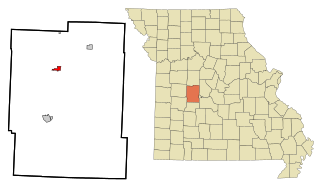
Lincoln is a city in Benton County, Missouri, United States. The population was 1,144 at the 2020 census.

Cave is a City in Lincoln County, Missouri, United States. The population was 5 at the 2010 census. However, As of the 2020 census, the population is 0, making it the smallest incorporated community in the U.S state of Missouri. It is the 939th largest city in Missouri and the 19481st largest city in the United States. Cave is currently declining at a rate of 0.00% annually and its population has decreased by 0.00% since the most recent census, which recorded a population of 5 in 2010.

Chain of Rocks is a village in Lincoln County, Missouri, United States. The population was 93 at the 2010 census.

Elsberry is a city in Lincoln County, Missouri, United States. The population was 1,937 at the 2020 census.

Hawk Point is a city in Lincoln County, Missouri, United States. The population was 669 at the 2010 census.
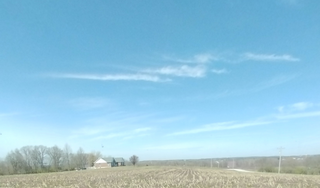
Old Monroe is a city in Lincoln County, Missouri, United States. The population was 249 at the 2020 census.

Bellflower is a city in Montgomery County, Missouri, United States. The population was 325 at the 2020 census, down from 393 in 2010.

High Hill is a city in Montgomery County, Missouri, United States. The population was 186 at the 2020 census.
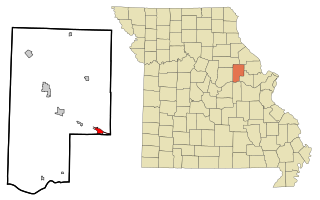
Jonesburg is a city in Montgomery County, Missouri, United States. The population was 726 at the 2020 census.

Middletown is a city in Montgomery County, Missouri, United States. The population was 171 at the 2020 census.
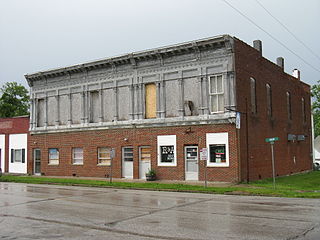
New Florence is a city in Montgomery County, Missouri, United States. The population was 641 at the 2020 census, down from 769 in 2010.

Wellsville is a city in Montgomery County, Missouri, United States. The population was 998 at the 2020 census, down from 1,217 in 2010.

Farmington is a city in St. Francois County located about 75 miles (121 km) southwest of St. Louis in the Lead Belt region in Missouri. As of the 2020 census, the population was 18,217. It is the county seat of St. Francois County. Farmington was established in 1822 as Murphy's Settlement, named for William Murphy of Kentucky, who first visited the site in 1798. When St. Francois County was organized, the town was briefly called St. Francois Court House and later renamed to Farmington.
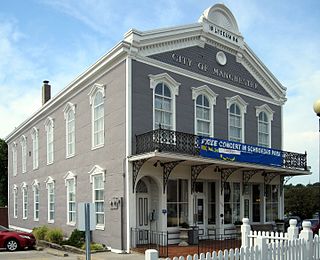
Manchester is a city in St. Louis County, Missouri, United States. The population was 18,333 at the 2020 census.

Moscow Mills is a city in Lincoln County, Missouri, United States. The population was 2,509 at the 2010 census.

Montgomery City is a city in and the county seat of Montgomery County, Missouri, United States. The population was 2,811 at the 2020 census.






















